Outward Bound, Settling Down
I’m abroad for the month of March, figured it might be worthwhile to record my travels – the quirks and particularities of the spots I’m visiting, how they contrast with home, how they’re similar. I’ll add some shots I’ve taken with the SLR to break up my monotonous descriptions, but, as with the aforementioned, no guarantees on quality there. Hope you enjoy!
In Transit
Changed planes in Dubai – alas, only really got to see the insides of the airport, so, I can’t really say I’ve properly visited. Still, the sight of the city jutting up from the desert was a bit surreal, and we were able to glimpse the Burj Khalifa through the haze of grit and smog on the way out, so that was neat. Airport seemed fairly mundane, at least the sections that I saw. Fairly elaborate duty-free section, with up-market brands and expensive alcohols (£500 for a bottle of cognac? Think I’ll stick with the Courvoisier…), but nothing mind-blowingly opulent. Maybe they keep that in the above-cattle-class sections.
Singapore
By no means should what follows give you the idea that I’m disappointed, ungrateful, or unhappy with my trip to Singapore. I’ve been quite fortunate to spend the last few days here – it’s a beautiful, dynamic place, rich in culture and heritage. That said, I cannot allow my gratitude to blind me to the darker aspects of it. Singapore exists as an anomaly, an aberration. It is a city-state built by and for international capital, and its laws and society bear that out. Though the full force of the law hasn’t been brought down on anyone since 1999, it is still illegal to be gay in Singapore. The degree to which thought crime is policed is extreme. Labour laws are execrable, where they even exist at all. More people, per capita, are put to death here than anywhere else in the world. Public demonstration is limited to a single square, for which one must obtain permits from the police in advance of any action. There is no freedom of the press. What I have to say about my time here is tempered by those facts.
Day One
Spent the morning in and around Arab street, a section of the city dominated by the Muslim, generally Malay, culture. Visited two mosques, both of which exhibited some Pisa-style tilting in their minarets. The first of the two, Masjid Hajjah Fatimah, was the smaller, built on order of a rich woman after she survived, unscathed, through two robberies, it is fairly humble. Syncretic architectural style, the minaret is reminiscent of a cathedral spire, and Malay embellishments abound. The second, Masjid Sultan, actually went through some heavy renovations recently. Bankrolled by Saudi “donation,” one can only guess what manner of strings are attached. The Masjid Sultan, in fact, is the only mosque in town allowed to announce the call to prayers. The rest (all 68 of them) are restricted under the efforts at racial and religious equanimity here in Singapore. Given the varied demographics of the nation, there is a strong push to harmony, knocking off the more ostentatious elements of individual ways of life. So I’m told, most people are all right with this – there is the belief that one is Singaporean first, and member of a cultural/religious enclave second.
That said, people do seem to hive off into their separate communities. The breakdown is about 70% Chinese, 18% Malay, and 8% Indian, primarily South. The State is quite intent on retaining the balance, with aggressive controls on immigration. Anglo-European expats are sprinkled throughout, but are generally held to a two-year residency license, subject to review based on good behaviour.
For all the non-Caucasian populace, the city doesn’t really feel like a “foreign” country. Most people dress in Western clothes, the cars on the streets are the usual mix of Asian brands and the frequent high-end Euro model. American brands are largely absent – saw maybe one Buick – but, then, they’re uncommon even in England. No pickup trucks, as I recall.
One of the first things that did stand out as obviously foreign were the gutters. Between a foot and a half to four feet deep, many uncovered, they divided the sidewalks from the street proper. It doesn’t take much effort to figure out the purpose – with storms capable of dumping stupid amounts of water in frightfully quick periods, anything less than a ready-made channel would leave the city awash. Singapore is known as the Garden City, with an admirable amount of green space and variety of trees, but even they couldn’t cope with the inundation.
Went through a more commercial area of the district after visiting the mosques – thin shops, deep set, vibrant bolts of cloth, tourist trinkets, onsite seamstress and tailors scattered around. There is a path, roofed, that runs between the dividing line of the culverts and the actual entrance to the shops. Generally, each shop is manned by two people, one within and the second in the exterior doorway, lounging until the unwary rube should venture near, then its all smiles and handshakes, entreaties to enter the shop proper. This covered path dependably varies in height from shop to shop, sometimes by gentle ramp, more often by brusque step. Not ideal when trudging along in as-yet-unbroken trainers, jet lagged to all get out.
Skipped over to Orchard Road, the high-end retail strip of the city, only long enough to grab a card for a the Mass Rapid Transit (MRT) and dash away to China Town. More people were in the streets here, but still felt like just another Asian quarter in any other Western city. We’d learn a bit more about the history of S’pore later on, with photos of this district before everything was streamlined and cleaned up, and the difference is stark.
It was shortly after this that we caught a glimpse of the underbelly of Singapore. Wandered into a mall, older, by the architecture, maybe about 1980s. The aisles between the shops were tight, the electric lighting harsh. The shop fronts were low-grade, the sort of thing you see on the more depressing style of strip malls in North America, though of course these were indoor. Odd assortment of shops, too – nail salons, currency exchanges, and more second-hand golfware stores than you’d think could be supported in one district, let alone mall. The most common space of all though, and certainly the most disconcerting, was placement agencies. Floor after dimly lit floor of tightly packed shops, three in five of which were placement agencies.
The majority of Singapore’s low-income rung is filled with Malaysian migrants, many of who depart the city once the day is done. They work as servants, in the industrial sector or as unskilled labour. For these migrants, there is no mandated minimum wage, few if any labour laws in place, and only the most basic rights as required by international law. Those lucky enough to be granted an extended stay cannot pursue relationships or become pregnant, lest their visa be summarily revoked. Abuse is rife, with nothing more than a soft-pedalled societal distaste to prevent gross exploitation. The placement agencies are there to connect these migrant workers with their employers, and the variety and sheer number is telling.
The jet lag was setting in earnest by the time we got down to the river, and the heat wasn’t helping. The highrises here, commercial and residential both, would fit nicely in New York or London – sleek, modern, glass. They contrast sharply with those in the more central parts of the island, which are redolent of their 1970’s origins – odd curves, pseudo-Art Deco tiling, washed out shades of cream, mint or magenta. On the fringes of this Manhattan-esque sector you can find vestiges of the colonial past, old centres of authority literally overshadowed by the nascent, globalised edifices of power.
We made a stuttering, frustrated attempt to get a look at the port, misguided from the start. Gave up after wandering about somewhat aimlessly, conquered by short tempers and an understandable exhaustion. Took the MRT back up town, leaving success for another day. Got a nice base burn to work on later – fully deserved, having foolishly neglected sun screen in a country a mere degree north of the Equator. Not in overcast, mildewy England anymore!
Posted on March 5, 2016, in Travels & Travails in Australasia and tagged Dubai, Singapore, Travel Writing, Vacation. Bookmark the permalink. 2 Comments.
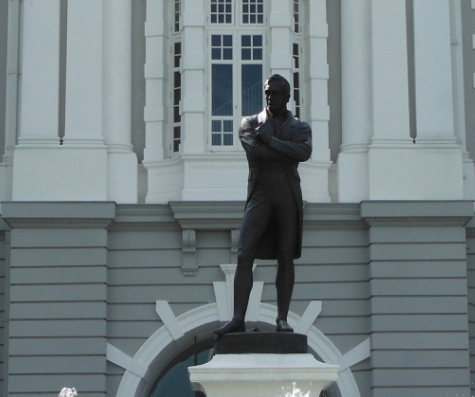
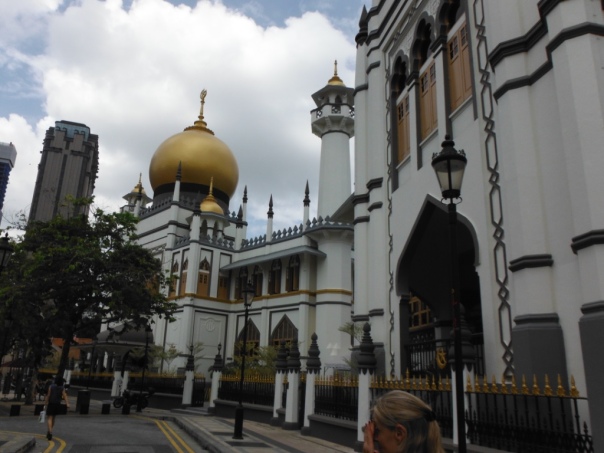
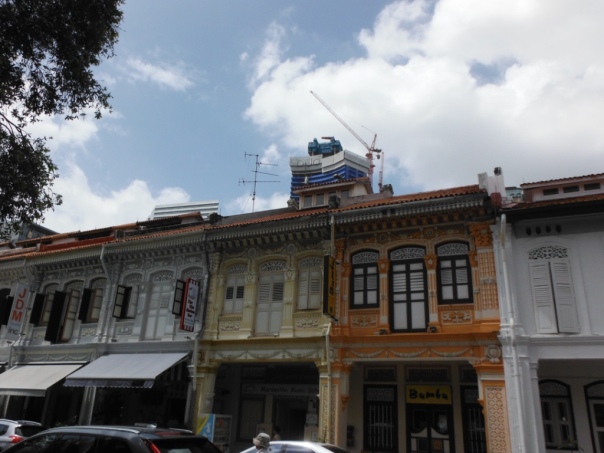
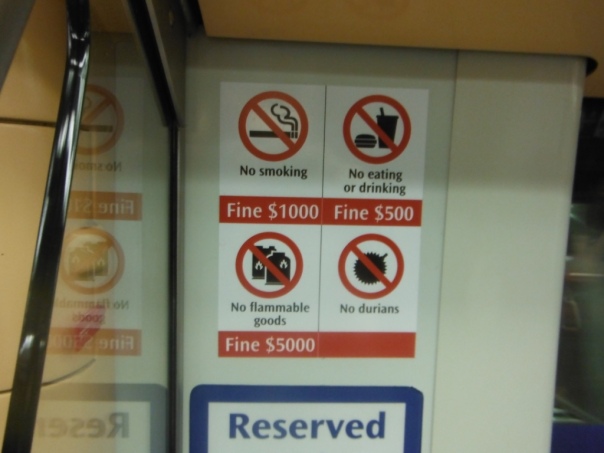
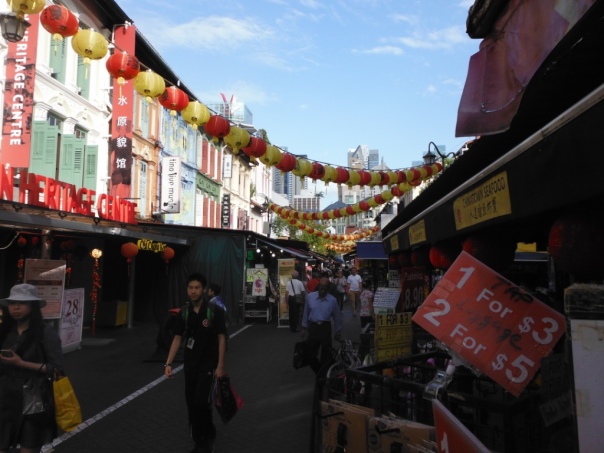
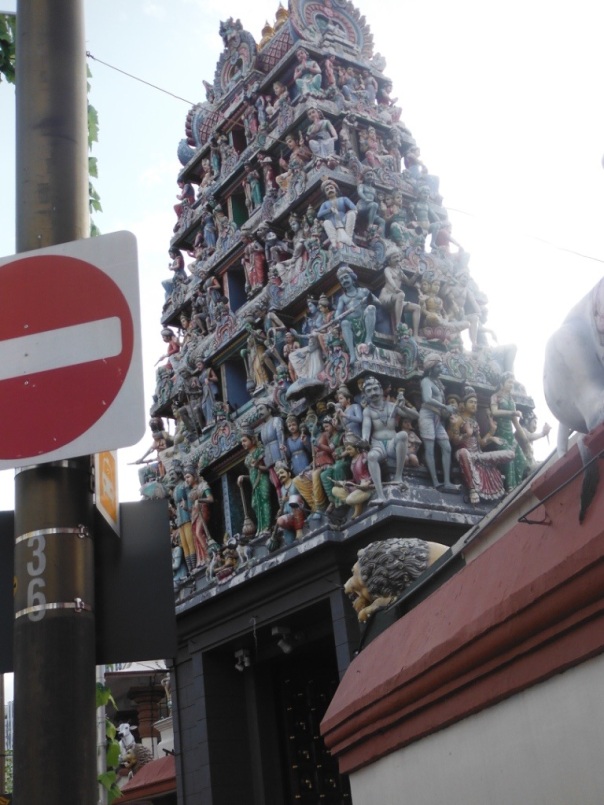
Pingback: Day Two – Adventures in the Art of Oversleeping | Staggering Brink
Pingback: Day Three – Of Big Bhajis and Bigger Botanies | Staggering Brink